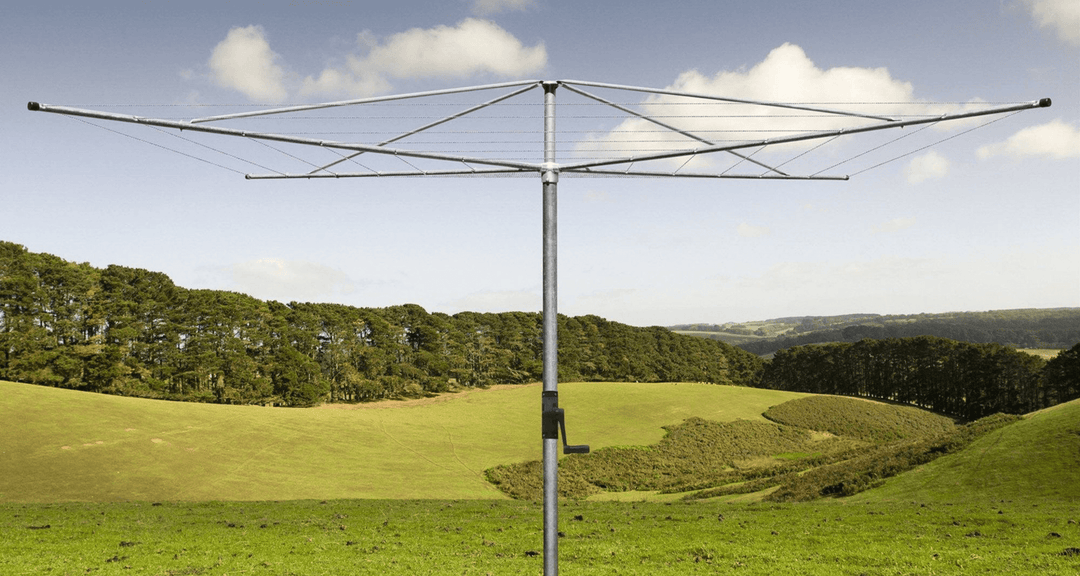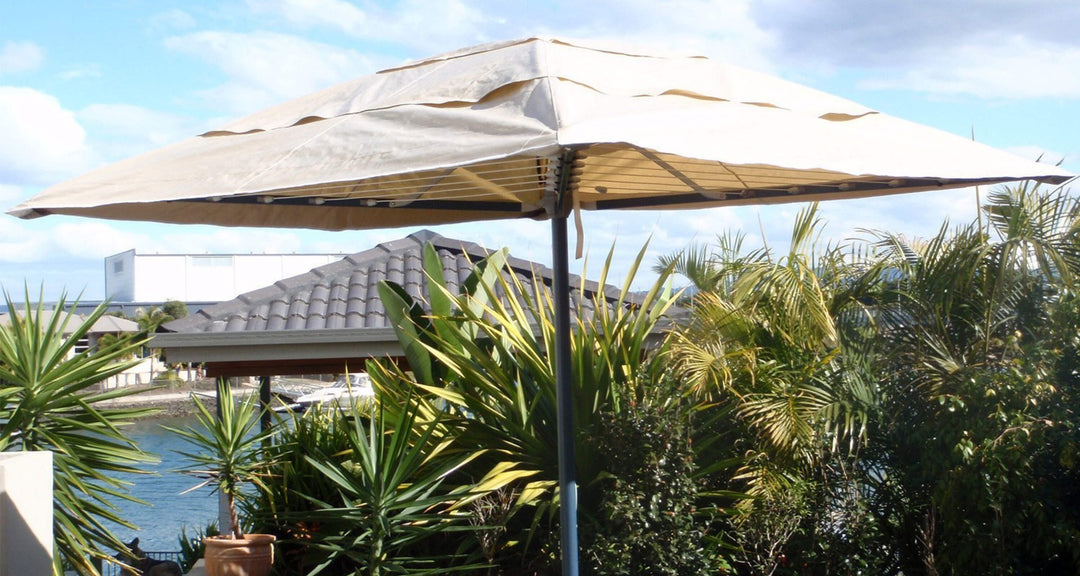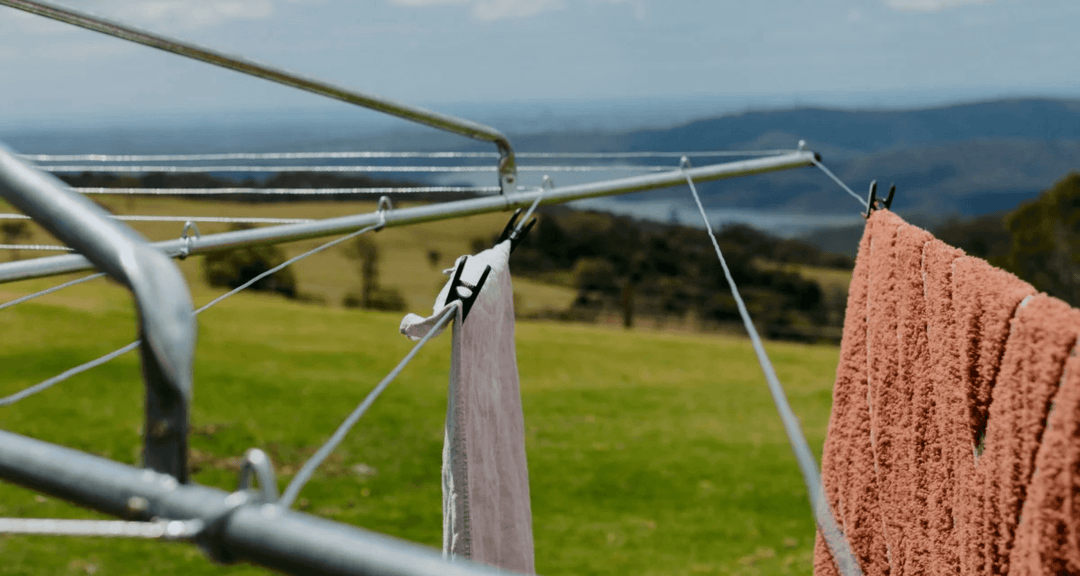How to Tighten a Clothesline: A Step-by-Step Guide
Is your clothesline sagging under the weight of wet laundry, or have you noticed that it's not as tight as it used to be?
Fear not, because this comprehensive guide on how to tighten a clothesline is here to rescue you!
We'll explore the importance of tightening your clothesline and provide a step-by-step process to help you achieve a perfect, taut line.
So let's dive in and transform your laundry hanging experience for the better!
Short Summary
-
Tightening your clothesline is important to prevent sagging, extend its life and keep laundry off the ground.
-
Different types of clotheslines require different tensioning methods including a tightener, tensioner or pulley system.
-
Regular checks, proper installation and quality materials are essential for maintaining an effective drying experience.
Topics in This Article:
Why Tightening Your Clothesline Cord is Important
When it comes to hanging laundry, a tight clothesline is crucial for both practical and aesthetic reasons.
Tightening the rope on your clothesline can help prevent sagging, extend the life of the line, and keep your laundry from touching the ground.
Nobody wants to deal with wrinkled or damp clothes after they've been hung out to dry, right?

Moreover, a well-maintained clothesline can reduce your energy bill and provide that fresh, sun-kissed scent that only air-dried laundry can offer.
So let's explore the importance of tightening your clothesline in more detail.
Preventing Sagging
Sagging clotheslines not only look unsightly, but also reduce the effectiveness of your drying efforts.
A sagging line can cause your freshly laundered clothes to touch the ground and pick up dirt or debris.
If you are using a standard clothesline, a clothesline separator can be used every 3 to 6 metres to keep the line tight and prevent the lines from sagging.
If you want a clothesline separator that both lasts and doesn't break the bank, have a look at the Motanar Aluminum Clothesline Separator.
Regularly checking the tension, using quality materials, and ensuring proper installation can also contribute to a sag-free clothesline experience.
Following our tips will ultimately help you maintain a well-functioning clothesline system that keeps your laundry off the ground and looking great.
Prolonging Clothesline Life
Tightening your clothesline not only prevents sagging, but also helps prolong its life by reducing wear and tear on cords and hardware.
Clotheslines can wear out due to several factors including improper tensioning, regular use, and exposure to environmental drying conditions.
This can also be a premature consequence of using cheap clothesline cord that are not designed for extreme Aussie conditions.
Brands like Hills and Austral offer reliable replacement cord packs that are actually engineered for use in Australia.
The clothesline cord packs have reinforced structure with highly UV-resistant coatings that allow them to last as long as can be.
They are also relatively cheap to purchase so might as well shell out for something that will last long instead of having to deal with flimsy clotheslines.
Keeping Laundry Off the Ground
Maintaining a tight clothesline is essential for keeping your clean laundry off the ground.
This in turn prevents dirt and debris from contaminating your freshly washed items (if it wasn't obvious enough).
With some rotary clotheslines, you can adjust the tension by following a specific restringing procedure or using built-in tension locks or tensioners.

Keeping your laundry elevated not only ensures cleanliness, but also maximises the available drying space and minimizes the risk of your clothes touching the ground.
Who wants to end the day with a bunch of muddied shirts and undies, right?
Types of Clotheslines and Their Tensioning Methods
Now that we've established the importance of a tight clothesline, let's explore the different types of clotheslines available and their tensioning methods.
In Australia, there are multiple types of clotheslines that usually require line tensioning at some point in their lifetime:
-
Retractable Clotheslines
-
Fold Down Clotheslines
-
Rotary Clotheslines
Each type has its own tensioning method, and it's crucial to know which one is suitable for your clothesline setup.
In the following sections, we'll delve into the tensioning methods for retractable clotheslines, fold down clotheslines, and rotary clotheslines.
Retractable Clotheslines
The great thing about modern retractable clotheslines is the fact that they are mostly equipped with independent reeling mechanisms.
Meaning, each line has its own reel which virtually eliminates uneven line tension.
Nevertheless, this is still an unavoidable issue that you will eventually encounter.
If you have a modern retractable clothesline like the Austral Retractaway or Hills Retracting, you don't really have to do much apart from adjusting the tension via a knob or lever at the time of use.
The clothesline does the rest to tighten the line for you.
Fold Down Clothesline
Most fold down clotheslines have built in line tensioning mechanism or lock of some sort.
Those from Austral, Eco, and Hills are pretty easy to locate and are usually found at the sides of the clothesline frame.
All it takes some bit of pulling and tugging from one end of the line to the other while consistently applying tension to the end of the cord.
We'll delve deeper into this later on, what's important is you have a general idea as to how it can be done with little to no tools required.
Rotary Clothesline
Rotary clotheslines are designed to rotate, allowing you to hang wet clothes and maximize their exposure to wind for drying.
These clotheslines often come with built-in tensioning mechanisms, such as tension locks or tensioners.
Proper tensioning with this type of clothesline is vital for ensuring that your laundry stays elevated and doesn't touch the ground.
By following the manufacturer's instructions and using the built-in tensioning mechanisms, you can maintain a tight and efficient rotary clothesline.
Step-by-Step Guide to Tightening a Clothesline
Ready to tighten up your clothesline?
In this step-by-step guide, we'll walk you through the process of preparing your clothesline, adjusting the tension, and securing the line to ensure a taut and efficient laundry drying experience.
Whether you have a retractable, fold down, or rotary clothesline, these steps will help you achieve to create the perfect tension and keep your clothes off the ground.
Preparing the Clothesline
Before you can tighten your clothesline, you need to prepare it by removing any old or damaged cords and cleaning the hardware.
This step ensures that your line is free of any debris or obstructions that could interfere with the tensioning process.
You'll need a replacement clothesline cord or wire, scissors or utility knife, pliers, and (possibly) replacement clips for this step.

We suggest referring to your clothesline's manufacturer recommended procedure to remove and replace certain parts of your specific clothes line.
Once you've removed the old cords and cleaned the hardware, you're ready to move on to adjusting the tension.
Adjusting Tension and Securing the Line
Bear in mind that adjusting the tension of your clothesline may require using tools for your specific clothes line model.
Follow the manufacturer's instructions and use the appropriate tool to adjust the tension on your clothesline.
Please ensure that it's neither too loose nor too tight to avoid compromising the structural integrity of your clothesline's frame.

In general, here is a step-by-step guide on how to tighten your clothesline cord:
-
Locate the tensioning mechanism of your clothesline and unlock/release the cap on just one end of the line.
-
Apply tension from starting from the secured end of the line then work your way from one line to another.
-
Once you have tightened the line lock it in place using the cap of the tensioner, check the line to make sure that it is straight and level.
-
Test the line by hanging a few items on it to make sure that it can hold the weight.
If the line sags or feels loose, you may need to adjust the tension or tighten it further.
Tips for Maintaining a Tight Clothesline
Regular checks, proper installation, and quality materials are all essential aspects of maintaining a tight clothesline.
Replace clothesline clips that have become brittle, damaged, or loose because those basically serve as the backbone of your clothesline.
Only use genuine replacement parts specifically designed for your clothesline model.
In the following sections, we'll provide a few tips and more detailed advice on each of these areas to help you keep your deck and clothesline in tip-top shape.
Regular Checks
Conducting regular checks on your clothesline is crucial for maintaining a tight line and preventing sagging.
Ensure that the tension remains consistent and adjust it as needed to keep your line taut.
If you notice any issues, it might be time to consider a new line.

Additionally, make sure the line is securely attached to the wall or posts and that the bolts/posts are firmly embedded.
By routinely checking the tension of your clothesline and making any necessary adjustments, you can prolong its life and keep your laundry off the ground.
Proper Installation
Proper installation of your clothesline is essential for maintaining a tight and efficient line.
Be sure to follow the manufacturer's instructions for your specific type of clothesline, and use the appropriate tools and materials for installation.
This will ensure that your clothesline remains taut and functions effectively for all your laundry drying needs.

Additionally, consider the optimal location for your clothesline to ensure it stays out of high-traffic areas and provides the best drying conditions.
Quality Materials
Using quality materials for your clothesline is crucial for reducing wear and tear and maintaining tension.
Choose durable materials such as poly core for your clothesline cord or wire.
It's also a good idea to invest in really good quality clothesline pegs or clothespins which does help prolong the lifespan of your drying lines.
Clothesline pegs will properly position and keep your laundry in place which aids in the even distribution of weight throughout the length of the cords.
By using high-quality materials for your washing line, you can ensure its longevity and enjoy an efficient laundry drying experience.
Frequently Asked Questions
It appears that the most likely cause of your sagging clothesline is either using too much weight on each spool or line, or adding too much wet washing to the line.
It’s best to use tensioners and stretch out the rope a couple times once it begins to sag in order to keep the line taut.
A clothesline tightener works by having the cord passed through it in a special way and then pulled to tighten it.
The mechanism inside contains ball bearings which loosen as the cord is pulled, allowing the spring to pull it back in place, thus making the line taut.
We have an awesome guide for replacing clothesline cord or wire here: How to Restring Clothesline
To ensure your clothesline works optimally and lasts longer, check its tension at least once every 3 months.
Adjust accordingly if the sagging is affecting your laundry routine and the drying performance of your clothesline.
Tightening up a clothesline helps prolong its life, prevents sagging, and keeps laundry from getting dirty.
How to Tighten a Clothesline: Final Words
In conclusion, maintaining a tight clothesline is crucial for an efficient drying performance, and effective laundry drying experience.
By following the tips and steps outlined in this guide, you can prevent a sagging clothesline, prolong the life of your clothesline...
...not to mention, keep your laundry off the ground!
Remember to regularly check the tension, ensure proper installation, and use quality materials.
This way, you get to enjoy a well-functioning clothesline that serves you well for years to come.
So, go ahead and tighten up that clothesline, and enjoy the fresh, sun-kissed scent of air-dried laundry!
Disclaimer:
This article contains affiliate links and we may earn a small commission from purchases made through them. Your support helps sustain our blog and allows us to consistently provide valuable content for you. Thank you for your understanding.
 Fold Down
Fold Down

 Rotary Hoist
Rotary Hoist
 Retractable
Retractable
 Portable
Portable
 Ceiling Airer
Ceiling Airer
 Covers
Covers




















